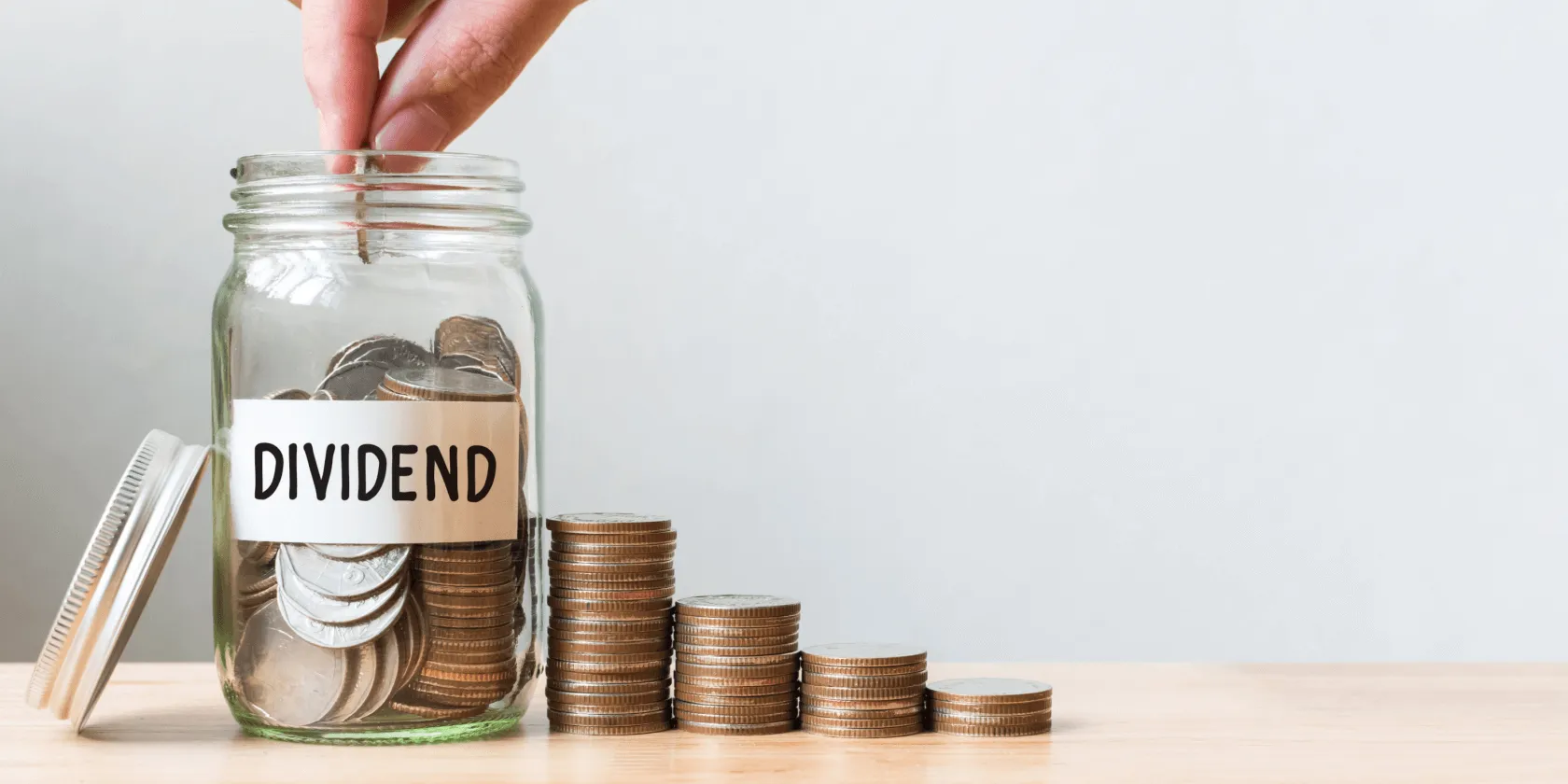Home / Life Insurance / Articles / Life Insurance Glossary / What is a Dividend in Life Insurance?
What is a Dividend in Life Insurance?
Neviya LaishramSept 30, 2025
Share Post
Definition:
A dividend in life insurance is a portion of the insurance company's profits or surplus that is shared with policyholders who own participating (with-profits) life insurance policies. These dividends are not guaranteed and are declared based on the company’s financial performance in a given year. In India, only participating policies are eligible for dividends.

Contents
Key Takeaways:
Dividends in life insurance are a portion of the insurer's profits shared with policyholders.
Insurers generate a return by investing a portion of your premium.
Insurance dividends are not guaranteed, which means the insurer pays them only if it earns a profit and declares a surplus on participating policies.
How does Dividend Work in Life Insurance?
Here are 4 easy steps to understand how dividends work in life insurance in India.
Step | Stage | Description |
|---|---|---|
1 | Participating Policy | You must have a participating life insurance policy |
2 | Calculation of surplus | An insurance company calculates its surplus money after covering all claims and expenses. |
3 | Declaration of dividends | A portion of this surplus is distributed or returned to eligible policyholders as dividends. |
4 | Dividend payout | Dividends are payable at maturity or death, or they can be used to pay premiums or earn interest if retained. In some cases, bonuses and dividends are paid out annually. |
Dividends in Life Insurance vs Dividends in the Share Market
Dividends in life insurance and from other companies have subtle key differences. Here they are:
Aspect | Life Insurance Dividends | Share Market Dividend |
|---|---|---|
Who gets the dividend? | Policyholders with participating life insurance policies. | Shareholders who own equity shares of the company. |
Sources | Surplus from insurer’s profits after claims, expenses, and reserves. | Net profits of a company after taxes, expenses, and reinvestment decisions. |
Tax treatment | Generally tax-free for the policyholder, but will be taxed once the payout begins. | Generally taxed based on the income tax slab. |
Guaranteed | It depends on company performance and is not a guaranteed payout. | It depends on the company's performance and is not guaranteed. |
Intent | For risk coverage and savings, or returns. | For capital appreciation and passive income. |
Market Influence | Influence of market volatility is less. | Directly affected by market performance and investor sentiment. |
Why do Dividends Matter For Policyholders?
Dividends offer financial flexibility, long-term growth and asset-building potential for the policyholder. Here’s why they matter for policyholders:
Benefit | Importance |
|---|---|
Bonus returns | Your policy gives you bonus returns in addition to guaranteed benefits. This increases the overall payout. |
Flexibility | Can be converted to cash, or be used to offset premiums or accumulate interest (depending on policy terms). |
Compounding annual growth | Coverage and returns grow over time when dividends are added annually |
Financial cushion | Bonuses can ease financial pressure during premium payments or add to claim value during emergencies. |
Summary
In life insurance, dividends provide future financial value by giving you back a portion of the insurer’s profits or surplus. They indicate the financial performance of the insurer and can be received in several ways, such as cash, to reduce your premium payments or for reinvesting in the policy to enhance the policy’s value. Understanding how dividends work in life insurance is crucial for policyholders to make informed insurance decisions and get the best out of their life insurance policy.
FAQs
Below are some of the frequently asked questions on Dividend in Life Insurance
What do dividends mean to policyholders?
In life insurance, dividends are a share of the insurer’s profits paid to policyholders who own participating (par) policies.
When does a life insurance policy pay dividends to its policyholders?
A policyholder will usually get dividends on an annual basis over the lifecycle of the policy.
What is an example of a participating policy?
Insurance products with a savings or investment component, such as whole life insurance and endowment plans, are good examples of participating policies.
Who should purchase a participating insurance policy for dividends?
Individuals who are keen on taking higher risks in exchange for greater returns can purchase a participating insurance policy. These plans provide bonuses as additional payouts or dividends based on the profits made by the insurance company.
How do dividends work with life insurance?
Dividend payments can be used to purchase additional coverage, offset premiums, and increase cash value.

Recent
Articles
How to Get Compensation for Domestic Flight Disruptions in India?
Team Acko Dec 5, 2025
Top 150 Popular Telugu Baby Boy Names with Meanings
Team Acko Dec 5, 2025
Medicines to Carry While Travelling Abroad from India
Team Acko Nov 28, 2025
Buying or Selling a Used Car and Challan Clearance
Saumya Srivastava Nov 28, 2025
The Pillion Penalty: Fines a Pillion Rider Can Get
Saumya Srivastava Nov 28, 2025
All Articles
Want to post any comments?
ACKO Term Life insurance reimagined
ARN:L0072|*T&Cs Apply
Check life insurance


